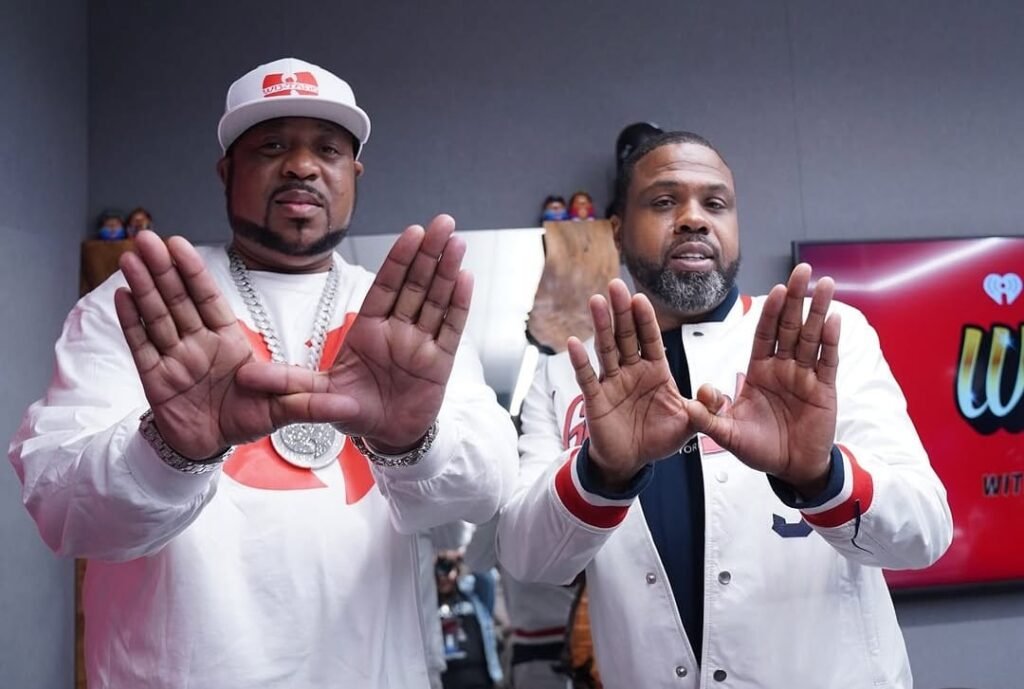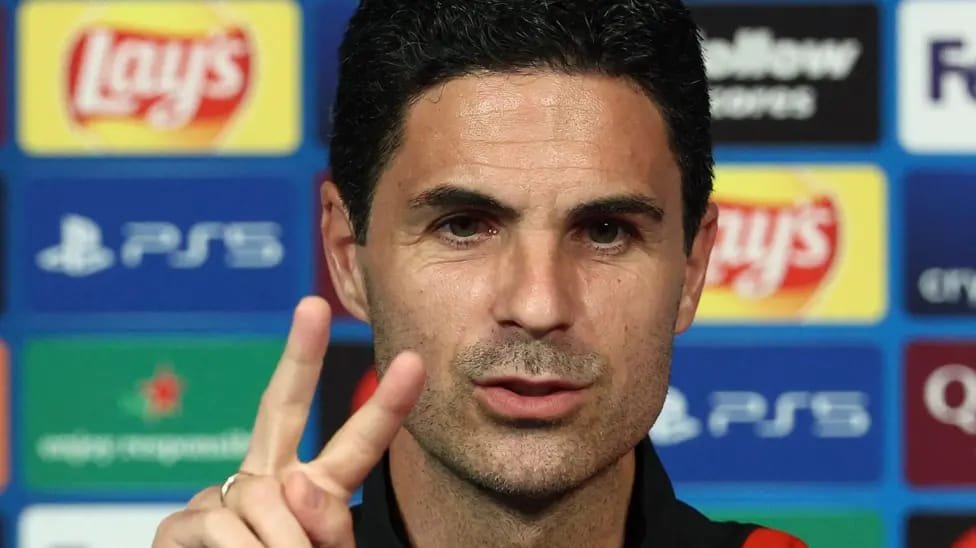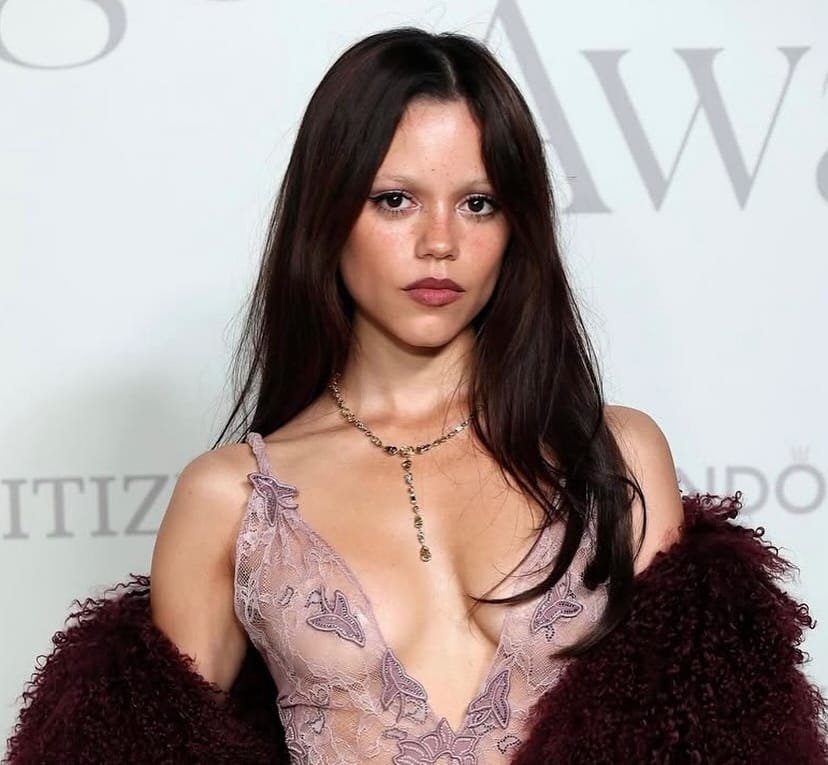
When an Album Becomes a Movement
Some albums drop and fade away. Others drop and detonate—rearranging the sound, shifting the culture, and setting new standards for what hip-hop can be. These aren’t just records you play; they’re timelines you live through.
From Illmatic to Take Care, these 10 albums didn’t just soundtrack moments—they shaped eras, built legacies, and gave voices to entire generations. They’re controversial, timeless, and untouchably great.
So let’s lock in. Here are the Top 10 Hip-Hop Albums of All Time—no skips, no filler, just classics.
🔟 The Marshall Mathers LP — Eminem (2000)
🎧 Controversial. Complex. Peak Slim Shady.

When Eminem released The Marshall Mathers LP on May 23, 2000, the world wasn’t ready. Following the massive success of The Slim Shady LP, expectations were sky-high. This was Eminem at a crossroads—fame, personal struggles, and Detroit grit all colliding into one album. The first-week U.S. sales shattered records at 1.76 million copies, showing that Slim Shady had evolved from underground rebel to global phenomenon.
Behind the scenes, Dr. Dre’s production gave the album a cinematic yet raw edge. Tracks like “Stan” were chilling narrative masterpieces, while “The Real Slim Shady” poked fun at celebrity culture with razor-sharp wit. Eminem tackled fame, trauma, and his own identity with a brutal honesty rarely heard before. The album’s controversies—lawsuits, public outrage, and media frenzy—only amplified its cultural weight, cementing Eminem as a lightning rod in hip-hop.
Our Experience: Hearing this album hit hard. Every track felt like a confessional. The storytelling was unmatched, the wordplay addictive, and the beats hypnotic. From “Kim” to “Marshall Mathers,” we experienced a spectrum of anger, vulnerability, and humor. Its raw emotional intensity set a new bar for personal expression in hip-hop.
Why #10: Iconic and influential, but while it shaped a generation, its scope is personal and less culturally sweeping than some later classics.
Future Impact: The album will remain a reference point for lyrical genius and fearless storytelling, influencing future generations to blend vulnerability with skill.
9️⃣ The Blueprint — Jay-Z (2001)
🎧 Flow. Samples. Self-mythology.

The Blueprint dropped on September 11, 2001—a day forever etched in history. Jay-Z didn’t just release an album; he released a blueprint for hip-hop’s evolution. With Kanye West and Just Blaze on production, soulful samples met street-smart lyrics, creating a perfect storm of storytelling and swagger. Hov dissected fame, ambition, and legacy, making every track a lesson in confidence, flow, and strategy.
Jay-Z recorded much of it in New York’s Baseline studios, crafting songs that would define the sound of an era. Tracks like “Renegade” showcased lyrical dexterity while “Izzo (H.O.V.A.)” was pure charisma, bridging street authenticity with mainstream appeal. The Blueprint was more than music; it was a business statement, showing how rap could be art, commerce, and legacy all at once.
Our Experience: Listening felt like a masterclass. Each sample, rhyme, and cadence was deliberate. The album blends storytelling, luxury branding, and cultural commentary, making it endlessly re-listenable.
Why #9: The Blueprint is iconic but sits here because its revolutionary aspects are more structural than emotive—while it redefined flow and production, it doesn’t hit the emotional depth of later albums.
Future Impact: Artists today still chase The Blueprint’s balance of storytelling and charisma. Its influence on production and flow is foundational for modern rap.
8️⃣ Nothing Was The Same — Drake (2013)
🎧 Sleek. Confident. Game-shifting.

Drake’s Nothing Was the Same was a declaration. Released September 24, 2013, it wasn’t just a follow-up to Take Care; it was Drake stepping fully into dominance. With atmospheric production, sharper bars, and an unshakable confidence, he cemented his place not only as a relatable voice but a global powerhouse.
Tracks like “Started From the Bottom” narrate his climb from Toronto streets to worldwide fame, while “Hold On, We’re Going Home” blended pop sensibility with rap credibility. The album showcased Drake’s duality: street-smart lyricist and mainstream hitmaker. Studio sessions reflected his meticulous approach—crafting melodies, perfecting flows, and ensuring each track had replay value.
Our Experience: The album feels like a cinematic journey. Every beat, lyric, and hook resonates emotionally. It’s introspective yet triumphant. Listening today, it still feels fresh—proof of Drake’s unmatched versatility.
Why #8: Dominance, storytelling, and replay value make this essential, but it’s more polished than revolutionary—its innovation is in refinement, not disruption.
Future Impact: Nothing Was the Same solidified Drake’s formula, inspiring countless artists to blend introspection, melody, and street sensibility. It’s a blueprint for modern rap’s emotional sophistication.
7️⃣ Good Kid, M.A.A.D City — Kendrick Lamar (2012)
🎧 A movie in album form.
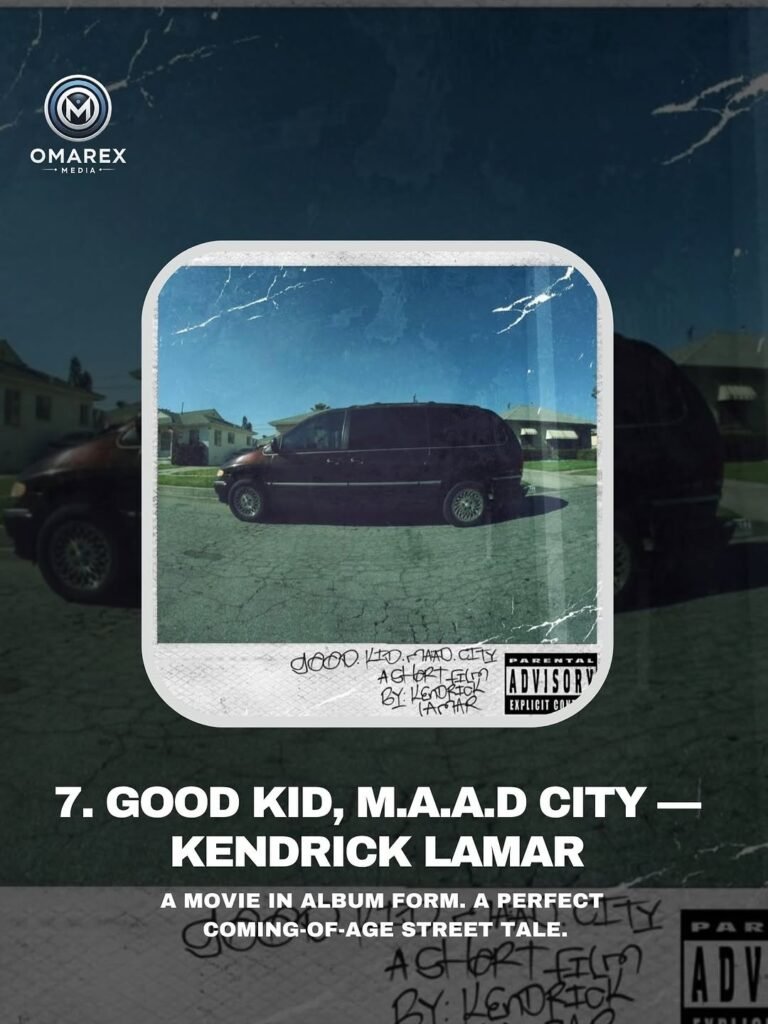
Kendrick Lamar’s Good Kid, M.A.A.D City dropped October 22, 2012, and it changed hip-hop storytelling forever. Kendrick narrated his Compton upbringing with cinematic clarity, turning the album into a coming-of-age story packed with tension, humor, and moral complexity. Tracks like “Swimming Pools” explore temptation and consequence, while “Money Trees” reflects ambition and survival.
The production combined West Coast sensibilities with modern experimental beats, creating a cohesive narrative that felt both personal and universal. Kendrick’s attention to detail—interludes, voicemails, and skits—made the album immersive, almost like an audio film.
Our Experience: Listening is an emotional journey. Each track adds depth to Kendrick’s story. It’s relatable yet extraordinary—a portrait of growth, struggle, and self-realization.
Why #7: Its storytelling and narrative cohesion are unmatched, but while it shaped narrative rap, it’s slightly more contained than larger cultural disruptions like TPAB.
Future Impact: Artists now craft albums as immersive experiences because of GKMC. The influence on concept albums is undeniable.
6️⃣ The Chronic — Dr. Dre (1992)
🎧 The birth of G-Funk.

Dr. Dre’s The Chronic released December 15, 1992, and redefined West Coast hip-hop. Smooth synths, heavy bass, and hypnotic grooves created the blueprint for G-funk. Introducing Snoop Dogg to the world, Dre fused street storytelling with party-ready vibes, forever changing rap’s sonic landscape.
Our Experience: The album is timeless. Every beat is iconic, every verse unforgettable. Listening today still transports you to early ’90s Compton.
Why #6: Legendary production and cultural shift, but it’s more sonic innovation than emotional depth compared to others on the list.
Future Impact: The Chronic continues to influence West Coast rap and beyond—its grooves, flows, and style remain templates for producers and rappers alike.
5️⃣ Ready to Die — The Notorious B.I.G. (1994)
🎧 Biggie’s raw introduction.

When Ready to Die hit the streets on September 13, 1994, the hip-hop world was in for a seismic shift. Christopher Wallace, aka The Notorious B.I.G., wasn’t just a rapper—he was a storyteller, a poet, and a mirror to the streets of Brooklyn. Biggie’s debut arrived at a time when East Coast rap was fighting for resurgence against the rising West Coast dominance, and this album put New York back on the map with undeniable force.
The album opens with “Intro,” a cinematic portrayal of birth and struggle, immediately pulling listeners into Biggie’s world. Tracks like “Juicy” chronicle his rise from poverty to fame, blending hope with grit. Meanwhile, “Gimme the Loot” and “Machine Gun Funk” display his unmatched lyrical prowess and charisma. Biggie had a voice that could command attention—smooth, menacing, and magnetic all at once.
Our Experience: Listening to Ready to Die is like walking through Biggie’s life. Every verse is a window into survival, ambition, and vulnerability. The highs are intoxicating; the lows are haunting. It’s a journey you feel in your bones. The combination of Puff Daddy’s polished production and Biggie’s raw storytelling made this album timeless.
Why #5: Biggie’s debut is essential hip-hop, laying the blueprint for lyrical storytelling, charisma, and emotional range. It’s slightly edged out of the top four only because albums like TPAB and Illmatic pushed boundaries culturally and socially in ways that reshaped the genre globally.
Future Impact: Ready to Die will continue to be a reference for aspiring rappers, storytellers, and anyone looking to capture the human experience in hip-hop. Its influence resonates in every lyricist who balances vulnerability with bravado.
4️⃣ Take Care — Drake (2011)
🎧 The blueprint of emotional rap.

Released November 15, 2011, Take Care wasn’t just Drake’s sophomore album—it was a cultural recalibration. Before this project, rap rarely lingered on vulnerability. After it, introspection, emotions, and relatability became central to the genre. Featuring production from Noah “40” Shebib, Jamie xx, and T-Minus, the album’s moody, atmospheric sound paired perfectly with Drake’s confessional lyrics.
Tracks like “Marvins Room” were intimate and raw, creating a space where heartbreak, self-doubt, and fame intersect. Collaborations with Rihanna, The Weeknd, and Kendrick Lamar elevated the project, blending different textures of contemporary rap and R&B. Drake’s ability to oscillate between emotional confessionals and street-smart narratives made Take Care timeless.
Our Experience: Experiencing Take Care is an emotional journey. Tracks linger, hooks resonate, and production envelopes you. We felt the album’s influence immediately—it normalized expressing vulnerability in a space often dominated by bravado. Every listen deepens the connection.
Why #4: Its emotional depth and sonic innovation make it a masterpiece, though culturally it doesn’t quite reach the historical weight of albums like Illmatic or TPAB.
Future Impact: Take Care set the stage for emotional rap’s dominance. Drake’s blueprint continues to influence artists across hip-hop, R&B, and even pop, redefining masculinity and vulnerability in music.
3️⃣ My Beautiful Dark Twisted Fantasy — Kanye West (2010)
🎧 Dark. Maximal. Operatic.
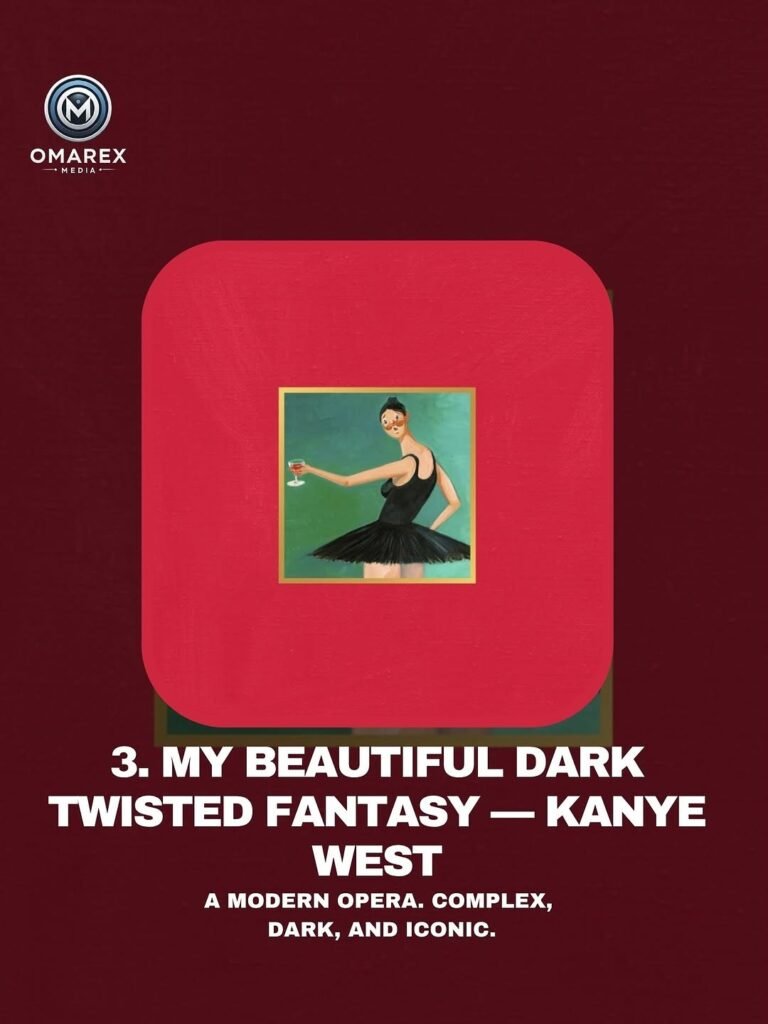
Kanye West released My Beautiful Dark Twisted Fantasy on November 22, 2010, in the aftermath of public backlash and personal scandal. The album was more than music—it was a reclamation of artistry, ego, and narrative control. Recorded in Hawaii with an ensemble of collaborators, it blends rap, rock, soul, and orchestral elements, creating a cinematic universe of chaos, vulnerability, and brilliance.
Tracks like “Power” explode with grandeur, “Runaway” offers 9 minutes of self-reflection and confession, and “All of the Lights” is maximalist perfection. Kanye’s production is unparalleled; every beat, string, and sample is intentional, crafting an album that’s operatic in scale yet intimately personal.
Our Experience: Listening to MBDTF is an all-consuming experience. Each play reveals new layers—subtle references, clever wordplay, intricate production. It’s chaotic, emotional, grandiose, and devastatingly human. The album demands attention, reflection, and repeat listens.
Why #3: A landmark in artistry and production. While it’s revolutionary musically and culturally, it’s slightly more introspective than Illmatic or TPAB in its societal commentary.
Future Impact: MBDTF continues to inspire artists to push boundaries, blend genres, and create immersive conceptual works. It’s a blueprint for ambitious, maximalist art in hip-hop.
2️⃣ Illmatic — Nas (1994)
🎧 Lyrical perfection.

When Illmatic dropped on April 19, 1994, Nas was just 20 years old, yet he wrote one of the most influential albums in hip-hop history. Born and raised in Queensbridge, Nas painted a vivid portrait of urban life with lyrical precision and poetic depth. Every track, from “N.Y. State of Mind” to “The World Is Yours,” is a masterclass in storytelling, flow, and urban realism.
The production roster—DJ Premier, Pete Rock, Q-Tip, Large Professor—crafted beats that perfectly complemented Nas’s voice. Illmatic isn’t just a collection of songs; it’s a blueprint for lyricism and narrative cohesion. Its influence on generations of rappers is immeasurable.
Our Experience: Listening to Illmatic is immersive. Nas’s vivid imagery, flawless flow, and storytelling make every listen an education. It’s raw, poetic, and timeless. We experienced the streets, ambition, and wisdom through his eyes.
Why #2: Technically flawless and culturally pivotal. It set the bar for lyricism, storytelling, and authenticity in hip-hop. Only TPAB edges it for societal breadth and experimental ambition.
Future Impact: Illmatic continues to influence lyricists globally. It’s the ultimate reference for storytelling, flow, and authenticity in hip-hop.
🥇 To Pimp a Butterfly — Kendrick Lamar (2015)
🎧 A masterpiece. Political. Poetic. Untouchable.
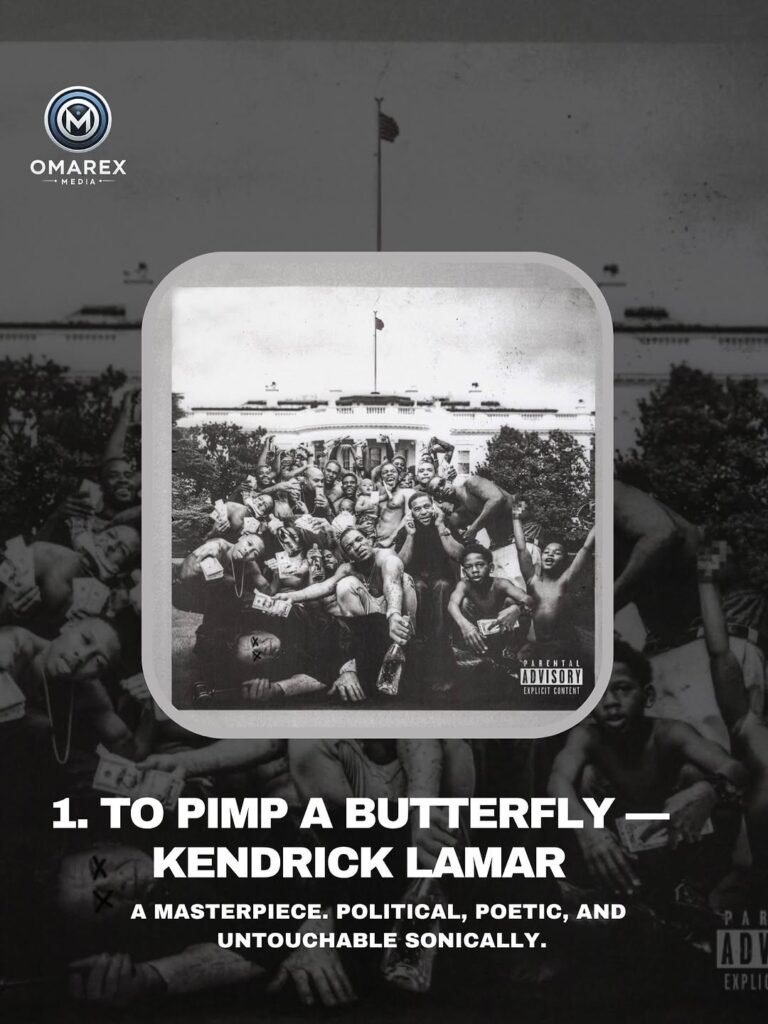
Released March 15, 2015, To Pimp a Butterfly isn’t just an album—it’s a curriculum. Kendrick Lamar blended jazz, funk, spoken word, and rap to craft a sprawling exploration of race, identity, fame, and trauma in America. Tracks like “Alright” became protest anthems, while “The Blacker the Berry” and “How Much a Dollar Cost” sparked global conversations.
The album’s sonic landscape is unmatched—Funkadelic-inspired grooves, avant-garde jazz influences, and layered vocals create a dense, immersive experience. Kendrick’s lyricism is razor-sharp, socially conscious, and introspective. Each track feels like a lesson, a conversation, a movement.
Our Experience: TPAB is overwhelming in the best way. It challenges, enlightens, and moves you emotionally. Every listen reveals new insights, lyrics, and textures. It’s political, personal, and universal. We felt the cultural weight, historical resonance, and artistic genius.
Why #1: TPAB is untouchable—lyrically, socially, and musically. It transcends hip-hop, sparking discourse and influencing not just music but culture, politics, and art.
Future Impact: It will remain a benchmark for socially conscious, genre-defying artistry. Kendrick redefined what hip-hop can achieve: more than music—it’s education, activism, and art.
Final Thoughts: More Than Music
Hip-hop’s greatest albums are more than tracklists. They’re time capsules, cultural blueprints, and revolutionary art forms. Each of these projects pushed boundaries—lyrical, sonic, and social—and redefined what the genre could achieve.
Of course, debates will rage forever. Is Take Care really top five? Should The College Dropout or All Eyez on Me have made the cut? That’s the beauty of hip-hop—it’s living, breathing, and endlessly debated.
But one thing is undeniable: these 10 albums aren’t just classics. They’re pillars of the culture.

